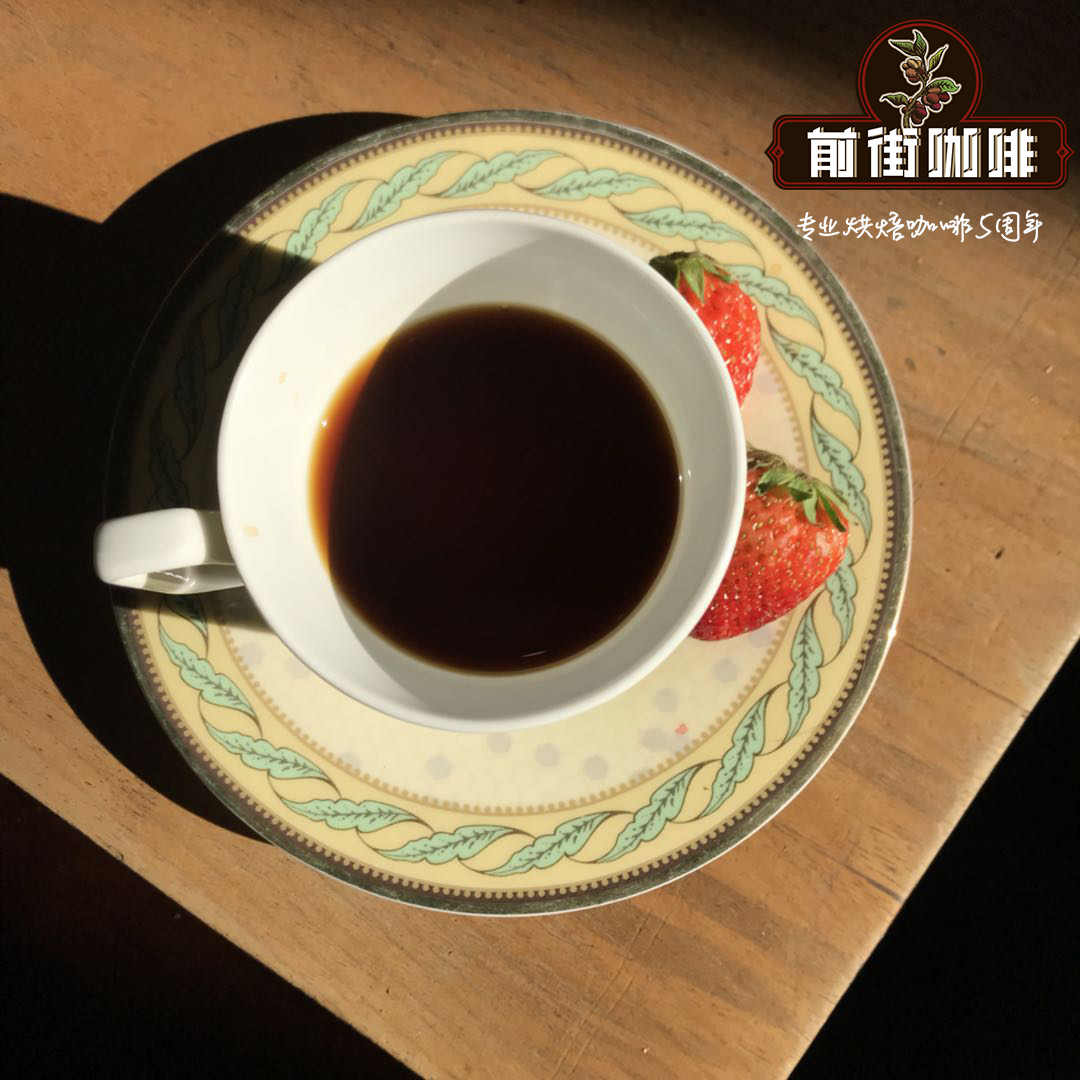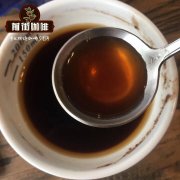[unique cocoa flavor] what are the taste characteristics of mocha coffee beans? Growth and cultivation of mocha coffee beans

Professional coffee knowledge exchange more coffee bean information please follow the coffee workshop (Wechat official account cafe_style)
[unique cocoa flavor] what are the taste characteristics of mocha coffee beans? How about the growth of mocha coffee beans?
Yemen still uses the traditional way of growing coffee, which is not much different from the way it was used in 1600. Coffee is grown at 3000 miles above sea level, and the diversion irrigation system built 400 years ago is still in use, which collects Rain Water and distributes a limited amount of water evenly. Due to the limited source of water, all coffee is treated by the sun. Although Ethiopia is the birthplace of coffee, Yemen is the first Arab country to start growing coffee. Yemeni Sanani is located in the capital area, where coffee is grown on terraces. There is no data to verify the wild varieties. Shannani's biggest feature is raw beans with a fermented wine aroma, which is not found in other countries after being calm and full of fermented wine.
In fact, Yemen is located on the Arabian Peninsula of the Asian continent, very close to Africa as long as it crosses the Red Sea and the Gulf of Aden Gulf of Aden, but other Arab countries do not produce coffee, so the world classifies Yemeni coffee as African coffee. Mocha is the export port of Yemeni coffee, because it is difficult to name all the tiny sub-producing areas in the history of coffee trade, even though the coffee produced by these insignificant small producing areas is very good, so it is named after the place of export. the sun beans nearby, including East Africa, were exported from the port of Mocha to all parts of the world in the early days, and now the port of Mocha has long been silted up and disappeared. Many Ethiopian sun beans are also named mocha, such as Haramoka, which we know well, because its flavor has something in common with Yemeni coffee.
Yemen was the first country to use coffee as a cash crop. Legend has it that Muslim Sufi pilgrims were introduced from Ethiopia in the 6th century. The most correct spelling should be Al-Mahka, which is Arabic spelling, growing on steep terrain with little rainfall, poor land and insufficient sunshine. This unique and difficult condition for coffee growth has given birth to an irreplaceable Yemeni mocha. Most of the wild Yemeni beans are unmanaged, grow naturally and then mature and dry, farmers only do the work of picking up, the overall style is [wild] or [natural] with high complexity, and for some people it is spicy, but you must try it sometime anyway, if you fall in love with him deeply, it will be the beginning of a whole new coffee journey.
The name Mocha comes from the fact that early coffee was mainly exported from the port of Mocha in Yemen. Although the port was closed in 1800, the name mocha, used for coffee, continues to be used. There are two main famous kinds of coffee: Mattari and Sanani.
Mattari coffee is full-bodied and has a cocoa flavor. Sanani coffee is more wild and sour. From one of the oldest coffee producing areas, the Yemeni Matali Mocha Coffee feels enigmatic and mysterious. Spicy, slightly alcoholic features bring a very exotic taste. Yemeni coffee is grown on dry sand, but it is a place where it rains during the rainy season. The root of the coffee tree is rich in running water, but it gives birth to a Yemeni mocha that cannot be replaced by the coffee world.
Farm farm name: Small producers small producing group
Grade grade: naturally dried Arabica beans, no regulatory body, no grading system
Region producing area: Sana'ani Shanani
Country countries: Yemen Yemen
Altitude altitude: 1650 m
Certification certification: without certification, all coffee is grown organically in accordance with the ancient method, and pesticides containing chemicals are not used.
Coffee Characteristics: coffee characteristics
Variety varieties: 10 special native mocha species are mainly Jaa'di,Taffahi and Dawairi.
Processing System treatment: Method Red ripe cherries dried on Africa Bed ripe cherry fruits were dried in an African (sun) elevated bed.
Harvest period harvest time: the main crop harvest period is from October to December, and the second harvest is in April in some producing areas.
Top Jury Descriptions judge's comment: the baking degree measured by the cup for 60 seconds at the beginning of the first explosion (Cinnamon)
Aroma aroma / flavor flavor: banana, spices, cinnamon, cloves, bergamot, maple syrup, longan, chocolate
Acid value: citrus, plum, cherry
Complex complexity and other other: rose perfume, creamy taste mellow, caramel sweet taste, lingering fruit wine taste
The entrance is smooth, sweet and bitter, and you can taste a strong chocolate taste. Very distinctive and rich flavor of coffee, it is worth trying. Yemeni Sanani raw beans are full of sour wine, the woody aroma is less dominated by fermented fruit, and the low aroma is the strength of Yemeni coffee.
Front Street Coffee recommendation:
Filter cup: Hario V60
Water temperature: 90 degrees
Degree of grinding: small Fuji 3.5
Cooking methods: the ratio of water to powder is 1:15, 15g powder, the first injection of 25g water, 25 s steaming, the second injection to 120g water cut off, waiting for the powder bed water to half and then water injection, slow water injection until 225g water, extraction time about 2:00
Analysis: using three-stage brewing to clarify the flavor of the front, middle and back of the coffee. Because V60 has many ribs and the drainage speed is fast, it can prolong the extraction time when the water is cut off.
Important Notice :
前街咖啡 FrontStreet Coffee has moved to new addredd:
FrontStreet Coffee Address: 315,Donghua East Road,GuangZhou
Tel:020 38364473
- Prev

What is Ninety Plus 90 + coffee? Ninetyplus coffee90+ coffee flavor
Professional coffee knowledge exchange more coffee bean information Please follow Coffee Workshop (Wechat official account cafe_style) Ninety Plus Coffee is a raw bean company, hereinafter referred to as: (90 +) Ninety plus is an internationally renowned coffee bean production and marketing company, and is famous for providing rare and unique raw coffee beans. In addition to working directly with coffee farmers
- Next

Ninety plus coffee90+ Coffee introduction 90 + Coffee grading introduction
Professional coffee knowledge exchange more coffee bean information please follow Coffee Workshop (Wechat official account cafe_style) Ninety Plus Coffee is a single variety coffee grower and producer in Panama and Ethiopia. They are committed to creating excellent taste experiences through process innovation. Its core is to connect with nature, best social practices, and by creating crowns.
Related
- Detailed explanation of Jadeite planting Land in Panamanian Jadeite Manor introduction to the grading system of Jadeite competitive bidding, Red bid, Green bid and Rose Summer
- Story of Coffee planting in Brenka region of Costa Rica Stonehenge Manor anaerobic heavy honey treatment of flavor mouth
- What's on the barrel of Blue Mountain Coffee beans?
- Can American coffee also pull flowers? How to use hot American style to pull out a good-looking pattern?
- Can you make a cold extract with coffee beans? What is the right proportion for cold-extracted coffee formula?
- Indonesian PWN Gold Mandrine Coffee Origin Features Flavor How to Chong? Mandolin coffee is American.
- A brief introduction to the flavor characteristics of Brazilian yellow bourbon coffee beans
- What is the effect of different water quality on the flavor of cold-extracted coffee? What kind of water is best for brewing coffee?
- Why do you think of Rose Summer whenever you mention Panamanian coffee?
- Introduction to the characteristics of authentic blue mountain coffee bean producing areas? What is the CIB Coffee Authority in Jamaica?

